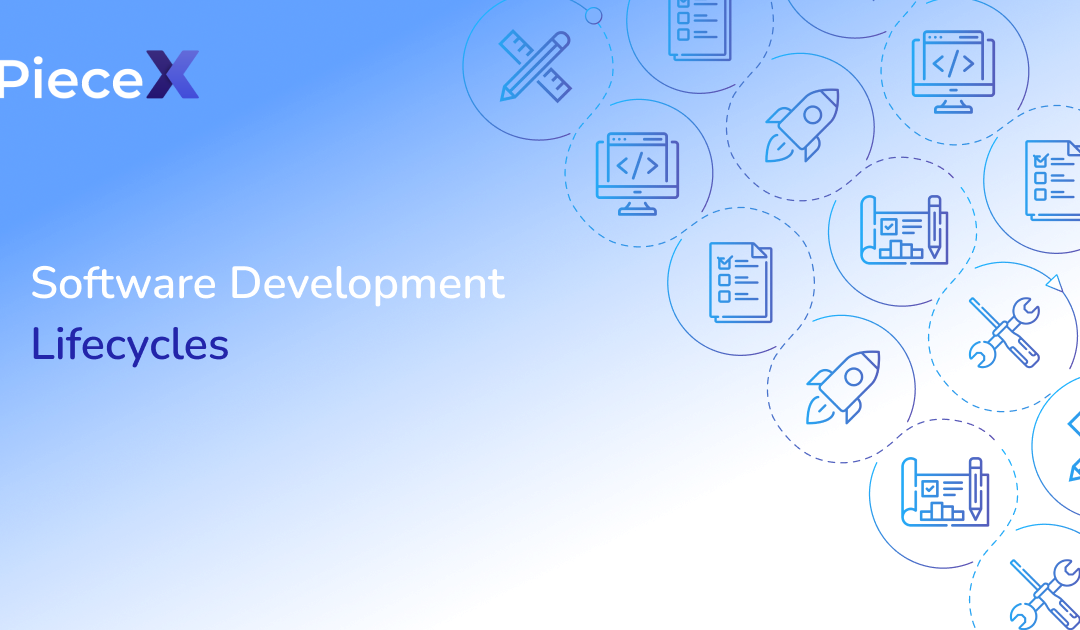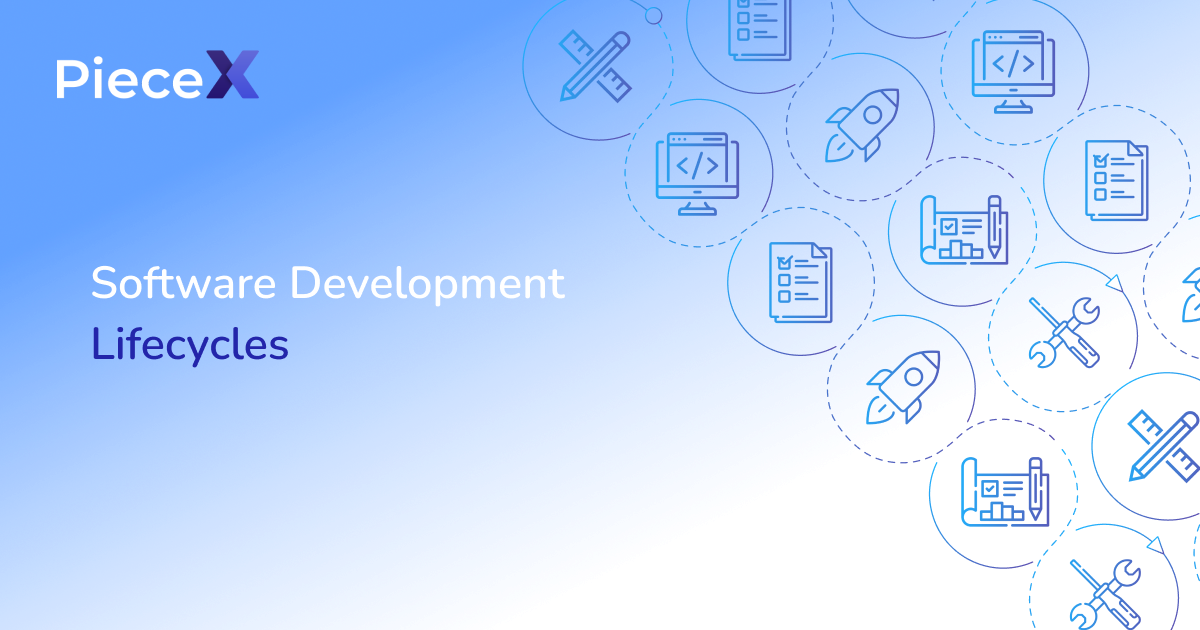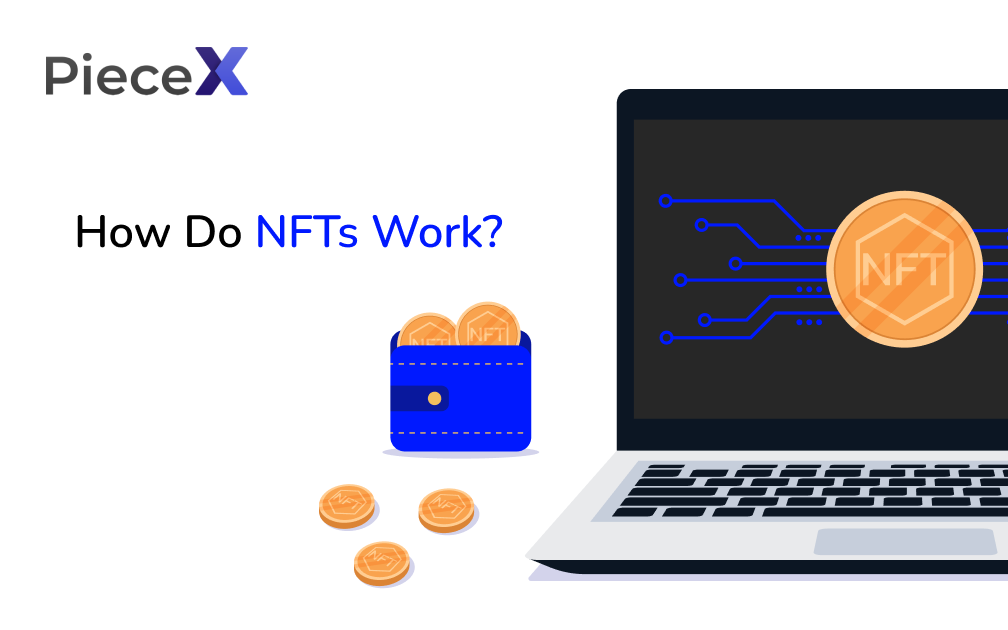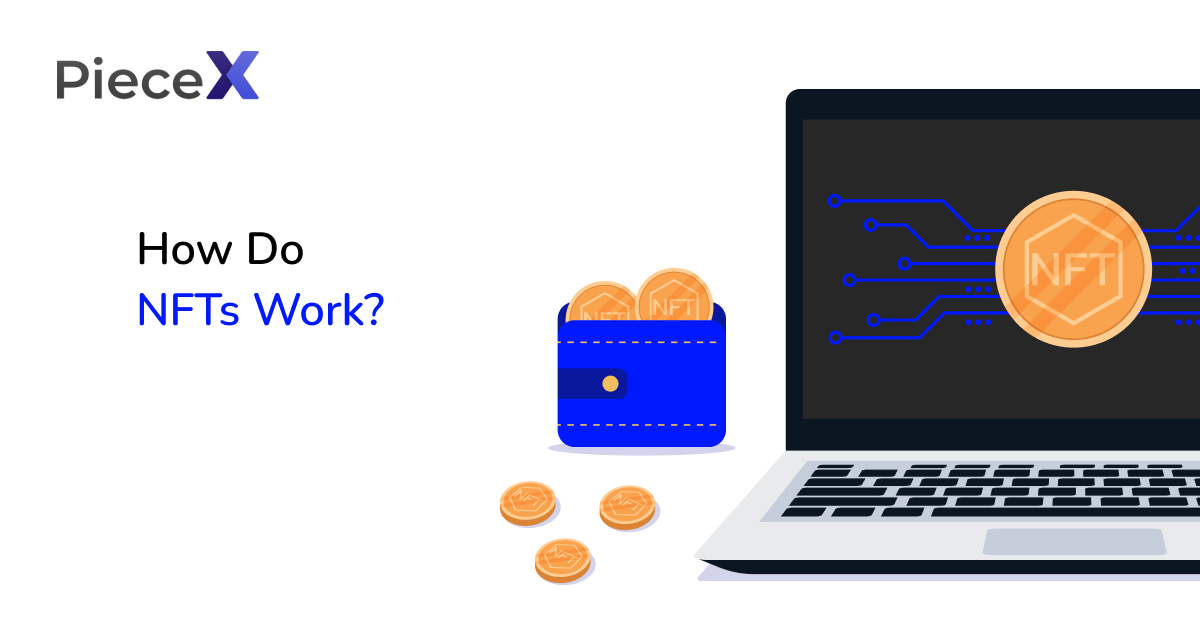

In today’s fast-paced software development landscape, finding ways to streamline the process and boost productivity is essential. One highly effective approach is applying software reuse strategies, which involve leveraging existing code and components to accelerate development and improve overall quality.
In this article, we will explore various software reuse strategies and platforms, such as PieceX, that facilitate code sharing and collaboration.
Code Reuse Strategies
One of the fundamental software reuse strategies is modularization. It involves breaking down software into smaller, reusable modules, such as source code. By encapsulating specific functionalities within modules, developers can easily integrate them into different projects.
Modularization not only promotes code reusability but also enhances maintainability and scalability. However, it’s important to address the challenges associated with maintaining clear module interfaces and ensuring proper documentation.
Another example of code reuse strategies is leveraging existing libraries and frameworks. Libraries and frameworks, like those available on PieceX, provide pre-built components and functionalities that can be easily integrated into projects.
By utilizing these ready-made solutions, developers can save time and effort, accelerating development cycles. However, it is crucial to weigh the pros and cons of using external code, as it may introduce dependencies and require careful version management.
Component-Based Development
Component-based development is an approach that emphasizes the construction of software systems using reusable components. These components encapsulate specific functionalities and can be assembled like building blocks to create complex applications. PieceX, for instance, offers a platform where developers can acquire and sell reusable source code components, fostering collaboration and promoting software reuse.
The benefits of component-based development include increased productivity, reduced development costs, and improved software quality. Nevertheless, challenges may arise when it comes to selecting suitable components, maintaining compatibility, and managing dependencies.
Design Patterns
Design patterns are reusable solutions to common software design problems. They provide proven approaches to address recurring challenges and promote efficient code reuse strategies.
By following established design patterns, developers can leverage tried and tested solutions, resulting in more robust and maintainable code. Best practices for applying design patterns involve understanding their purpose, adapting them to specific contexts, and documenting their usage.
Incorporating design patterns into development practices can enhance code reusability and foster a shared language among developers.
Knowledge-Based Systems
Knowledge-based systems utilize domain knowledge to facilitate software development and reuse. By capturing and codifying expertise, developers can create reusable components that embody best practices and domain-specific knowledge.
These systems can automate decision-making processes and offer intelligent recommendations during software development. However, challenges may arise in acquiring, organizing, and updating knowledge repositories, as well as ensuring the accuracy and relevance of the captured knowledge.
Reuse Metrics and Management
To maximize the benefits of software reuse strategies, it is crucial to track and measure its effectiveness. Reuse metrics provide insights into the amount of reused code, the impact on development cycles, and the reduction in defects.
Establishing a reuse repository, such as PieceX, enables organizations to manage and share their software assets effectively. By maintaining a centralized repository, developers can easily discover and reuse existing components, reducing redundancy and fostering collaboration.
Effective management of software assets and documentation ensures that reusable code is properly documented and maintained, facilitating its discoverability and adoption.
Conclusion
Software reuse is a powerful strategy that accelerates development, improves software quality, and encourages innovation. By implementing code reuse strategies, leveraging libraries and frameworks, and adopting component-based development, developers can save time, reduce costs, and enhance productivity.
Additionally, incorporating design patterns, knowledge-based systems, and effective reuse metrics and management practices further amplifies the benefits of software reuse.
Platforms like PieceX play a significant role in facilitating code sharing, collaboration, and the growth of a vibrant software reuse community. By embracing software reuse, organizations can unlock efficiency, foster innovation, and stay ahead in the rapidly evolving software development landscape.
For more articles such as this, don’t forget to visit the PieceX Knowledgebase Blog.


Artificial Intelligence (AI) is a technology that has changed many industries around the world. It helps businesses by making processes more efficient and improving customer experiences. In this article, we will explore two important ways AI is used: chat bots and price management. We will learn about their evolution, what they can do, and how they can benefit us in the future.
The Rise of Chat Bots
Chat bots such as ChatGPT are computer programs that can have conversations with people. They have become very popular in recent years, especially for customer service. Many companies, like those in e-commerce or banking, use chat bots to help their customers.
Chat bots can do many things. They can answer common questions, give real-time help, and guide users through processes. With AI, these bots can understand and respond to human language, making interactions feel more personal and human-like.
Advancements in Natural Language Processing (NLP)
One important part of chat bots is Natural Language Processing (NLP), which is a type of AI that focuses on how computers and humans communicate with each other. NLP has made chat bots even better by helping them understand and interpret what people say.
With NLP, chat bots can understand context, detect emotions, and find important information from what users say. They can have meaningful conversations and give accurate answers. This has made customer support faster and improved overall customer satisfaction.
Beyond Chat Bots: AI in Price Management
Price management is a big challenge for businesses. It’s hard to know the best prices for products because markets change and customers have different preferences. AI can help with this by providing new ways to optimize pricing strategies.
AI uses a lot of data to analyze market trends, what competitors are doing, and what customers want. By using AI-powered pricing models and algorithms, businesses can make smart decisions about how to price their products. This helps them adapt to changes in the market and make more money.
One example of AI in price management is PieceX, a marketplace for software and AI assets. PieceX uses AI to set prices in real-time based on demand and availability in its very own Dynamic Pricing. This helps businesses stay competitive and make more profit.
PieceX harnessed the power of AI algorithms to optimize the prices of its products, analyzing customer preferences and competitor strategies. By closely monitoring what customers desired and adjusting prices accordingly, PieceX successfully maintained competitiveness and drove increased profitability for all its Marketplace sellers. The outcome was a significant boost in sales and heightened customer interest, establishing PieceX as a prominent leader within its industry.
Through the implementation of Dynamic Pricing, PieceX experienced remarkable outcomes. By carefully observing customer demands and aligning pricing strategies accordingly, PieceX ensures its offerings remained compelling in a competitive market landscape. As a result, the company witnessed a substantial increase in sales volume and a surge in customer engagement. This success solidified PieceX’s reputation as an industry leader, earning recognition and trust from both customers and competitors alike.
Future Outlook
The future of AI in chat bots and price management looks promising. As technology improves, chat bots will become even better at helping customers and making interactions feel more human. AI will also continue to evolve in price management, helping businesses make better pricing decisions and be more successful.
However, there are challenges to consider. We need to make sure that AI is used ethically and that it respects people’s privacy. There is also more work to be done in developing AI that can understand complex emotions and context.
Conclusion
In conclusion, AI has changed how businesses interact with customers and manage prices. Chat bots with AI have made customer support faster and better. They can answer questions and help customers with problems. AI has also helped with price management by using data to make smart pricing decisions. This helps businesses adapt to changes in the market and make more money.
The future of AI in chat bots and price management is exciting. As technology improves, chat bots will become even more helpful and personalized. They will make customer experiences smoother and more enjoyable. AI will also continue to advance in price management, assisting businesses in setting optimal prices and maximizing their profits.
By embracing AI, businesses can enhance customer experiences, streamline operations, and stay competitive in a rapidly evolving market. It’s an exciting time for AI, and we can expect further innovations and opportunities in chat bots and price management as this technology continues to progress.
For more articles like this, make sure to check out our knowledgebase blog!


Software development is a complex and ever-changing process that requires a lot of planning, preparation, and organization. To help ensure that software projects are completed successfully, software development life cycles (SDLCs) have been developed. In this article, we’ll discuss the different phases of SDLCs, the various SDLC models, how to choose the right model for a project, how to implement an SDLC, and some of the challenges and risks associated with SDLCs.
What are Software Development Life Cycles?
Software development life cycles (SDLCs) are a series of steps that software development teams follow to design, develop, test, and deploy software. The purpose of SDLCs is to provide a framework for software development that ensures high-quality products are delivered on time and within budget. The phases of SDLCs typically include planning, analysis, design, development, testing, deployment, and maintenance.
Planning Phase: During the planning phase, the software development team identifies the goals and objectives of the project, determines the project scope, identifies the target audience, defines the requirements, and establishes a project plan.
Analysis Phase: In the analysis phase, the development team analyzes the requirements in more detail, breaks them down into smaller tasks, and creates a functional specification document that outlines the features and functionality of the software.
Design Phase: In the design phase, the development team creates a detailed design of the software, including the user interface, database design, and system architecture.
Development Phase: In the development phase, the team writes the code and creates the software product based on the design specifications.
Testing Phase: During the testing phase, the development team tests the software to ensure that it meets the specified requirements and is free of defects and bugs.
Deployment Phase: In the deployment phase, the software is released to the public or to the intended audience.
Maintenance Phase: Finally, in the maintenance phase, the development team maintains the software and provides ongoing support to ensure that it continues to function as expected.
Different Types of SDLC Models
There are several different SDLC models, including the Waterfall model, Agile model, Spiral model, Iterative model, V-Model, and others. Each model has its advantages and disadvantages, and different models are better suited for different types of software development projects.
Waterfall Model: The Waterfall model is a linear sequential model that consists of a series of sequential phases. This model is best suited for small projects with well-defined requirements.
Agile Model: The Agile model is a more iterative and flexible approach that involves short development cycles and frequent feedback from customers. This model is best suited for large projects with changing requirements.
Spiral Model: The Spiral model combines the Waterfall and Agile models and is best suited for large, complex projects with uncertain requirements.
Iterative Model: The Iterative model is an incremental approach that involves the development of the software in small, incremental cycles. This model is best suited for projects with changing requirements.
V-Model: The V-Model is a more structured approach that involves the creation of a detailed test plan before the development process begins. This model is best suited for projects with strict quality control requirements.
Choosing the Right SDLC Model
When choosing an SDLC model, there are several factors to consider, such as the project requirements, team size, budget, and timeline. The right model for a particular project will depend on the specific needs and goals of the project.
To select the appropriate SDLC model for a specific project, the development team should carefully analyze the requirements, constraints, and risks of the project. They should also consider the team’s skill set and experience level, as well as the available resources and timeline.
Implementing an SDLC
Implementing an SDLC involves a series of steps that need to be followed carefully to ensure that the project is completed successfully. The first step is to select the appropriate SDLC model for the project. Once the model is chosen, the development team needs to create a detailed plan that outlines the specific tasks and responsibilities of each team member during each phase of the SDLC.
During the planning phase, the team should establish a project plan, identify the requirements, and create a project schedule. They should also create a budget and allocate resources for the project.
During the analysis phase, the team should break down the requirements into smaller tasks and create a functional specification document that outlines the features and functionality of the software.
In the design phase, the development team should create a detailed design of the software, including the user interface, database design, and system architecture. This design will serve as a blueprint for the development phase.
In the development phase, the team should write the code and create the software product based on the design specifications. They should also test the software during the development phase to identify and fix any defects or bugs.
During the testing phase, the team should test the software to ensure that it meets the specified requirements and is free of defects and bugs. They should also perform usability testing to ensure that the software is user-friendly.
Once the software has been tested and is free of defects and bugs, it can be deployed to the public or to the intended audience. The development team should also provide ongoing support and maintenance to ensure that the software continues to function as expected.
Challenges and Risks in SDLCs
While SDLCs are designed to ensure high-quality software development, there are also several challenges and risks associated with SDLCs. Some of the common challenges and risks include scope creep, budget overruns, delays, and communication issues.
Scope creep refers to the tendency for requirements to change or expand during the software development process, which can lead to delays and increased costs.
Budget overruns occur when the project costs exceed the allocated budget, which can lead to financial problems for the development team. Delays can occur when the project timeline is not properly managed, leading to missed deadlines and decreased customer satisfaction.
Communication issues can occur when team members do not communicate effectively, leading to misunderstandings and delays in the development process.
To mitigate these risks and overcome challenges, the development team should carefully plan and manage the project, communicate effectively, and manage the project scope and budget. They should also be prepared to adapt to changing requirements and respond quickly to any issues or problems that arise.
Conclusion
In conclusion, SDLCs are an important part of software development that provide a framework for designing, developing, testing, and deploying high-quality software products.
There are several different SDLC models to choose from, each with its advantages and disadvantages. When choosing an SDLC model, it is important to consider the specific needs and goals of the project.
Implementing an SDLC involves careful planning and execution, and the development team should be prepared to adapt to changing requirements and respond quickly to any issues or problems that arise.
By following best practices and effectively managing the project, software development teams can successfully complete their projects on time and within budget.
Learn more about Software Development from The PieceX Knowledgebase Blog


Non-fungible tokens, or NFTs, have been making headlines lately, with digital art selling for millions of dollars and even tweets being sold as unique digital assets.
But what exactly are NFTs and how do they work? In this article, we’ll explain the basics of NFTs, their benefits, criticisms, and limitations and all together how NFTs work.
What are NFTs?
In simple terms, NFTs are digital assets that represent ownership of unique items or pieces of content, such as art, music, videos, and even tweets. Unlike cryptocurrencies like Bitcoin or Ethereum, which are fungible and interchangeable, NFTs are non-fungible, meaning each one is unique and cannot be exchanged for another identical token.
NFTs are created using blockchain technology, the same technology that underlies cryptocurrencies. Each NFT is a unique token that is verified and tracked on a public ledger, or blockchain, which records all transactions involving the token. This ensures that each NFT is one-of-a-kind and cannot be replicated or counterfeited.
Examples of NFTs include digital artwork, such as the $69 million sale of a digital collage by the artist Beeple, as well as virtual real estate, music, and even tweets. Essentially, any digital content that can be owned and sold can potentially be turned into an NFT.
How NFTs Work
So, how do NFTs work? The process of creating and owning an NFT involves several steps:
Create the digital asset: The first step in creating an NFT is to create the digital asset, such as a piece of art, music, or video. This asset must be unique and cannot be replicated or duplicated.
Mint the NFT: Once the digital asset is created, it can be turned into an NFT by “minting” it on a blockchain. This involves creating a unique token that represents ownership of the digital asset. Minting an NFT typically involves paying a fee, which is usually paid in cryptocurrency.
Verify ownership: Once the NFT is minted, it is verified and recorded on the blockchain, which serves as a public ledger that records all transactions involving the token. This ensures that the NFT is unique and cannot be replicated or counterfeited.
Sell or trade the NFT: Once the NFT is minted and verified, it can be sold or traded on a marketplace or exchanged for other cryptocurrencies. The price of an NFT is determined by the market demand for the digital asset it represents, as well as its perceived value and rarity.
Smart contracts are also an important aspect of NFTs. Smart contracts are self-executing contracts that are programmed to automatically enforce the terms of the contract. In the case of NFTs, smart contracts can be used to automate the sale, transfer, and ownership of the digital asset represented by the NFT. For example, a smart contract could be programmed to automatically transfer ownership of an NFT to a buyer once they have paid the agreed-upon price.
Benefits of NFTs
NFTs offer several benefits over traditional ownership of digital assets, including:
Ownership and authenticity: NFTs provide a way to prove ownership and authenticity of digital assets. With traditional digital assets, it can be difficult to prove ownership or authenticity, as anyone can copy or replicate the asset. With NFTs, ownership and authenticity are recorded on a public blockchain, providing a way to verify ownership and authenticity.
Monetization of digital assets: NFTs provide a way to monetize digital assets that were previously difficult to monetize, such as digital art, music, and videos. By turning these assets into NFTs, creators can sell and trade them as unique digital assets, potentially earning significant amounts of money.
Use cases: NFTs have potential use cases beyond digital art and collectibles. For example, they could be used to verify ownership of virtual real estate in online games, or to represent ownership of tickets to concerts or other events.
Criticisms and Limitations of NFTs
While NFTs offer several benefits, they also have some limitations and criticisms, including:
Environmental concerns: The process of minting NFTs and recording them on a blockchain requires a significant amount of energy, which has raised concerns about the environmental impact of NFTs. Critics argue that the energy consumption associated with NFTs is unsustainable and contributes to climate change.
Lack of regulation: NFTs are largely unregulated, which has led to concerns about fraud and scams. There have been reports of fake NFTs being sold on marketplaces, and some artists have criticized the lack of transparency and accountability in the NFT market.
Volatility and unpredictability of NFT market: The market for NFTs is still relatively new and volatile, with prices fluctuating rapidly and unpredictably. This can make it difficult for artists and creators to determine the true value of their digital assets, and for buyers to assess the potential long-term value of an NFT.
NFT Marketplaces
NFT marketplaces provide a platform for buyers and sellers to trade NFTs, and they have become an increasingly popular way to buy and sell digital assets.
One such marketplace is available on PieceX, which not only provides a platform for creators to sell their NFTs, but also offers source code for building a customizable NFT marketplace. PieceX’s NFT marketplace source code allows developers to quickly and easily create their own NFT marketplace, tailored to their specific needs and preferences.
This can be especially useful for businesses and organizations that want to take advantage of the benefits of NFTs but may not have the technical expertise to build their own marketplace from scratch. With PieceX’s NFT marketplace source code, anyone can participate in the growing market for NFTs.
Conclusion
NFTs have the potential to revolutionize the way we think about ownership of digital assets, providing a way to prove ownership and authenticity and monetize previously difficult-to-monetize assets.
However, they also have limitations and criticisms, including concerns about their environmental impact, lack of regulation, and volatility. As the market for NFTs continues to develop and evolve, it will be important to address these concerns and ensure that NFTs are a sustainable and equitable way to own and trade digital assets.
For more articles like this, check out our Knowledgebase Blog!


Web development is an essential aspect of modern businesses and their online presence. It involves designing, developing, and deploying websites and web applications to provide better user experiences for online audiences.
Web development is a complex process that requires the collaboration of various teams and individuals to create functional and visually appealing websites. Therefore, optimizing the web development process can significantly improve efficiency and reduce time and costs.
In this article, we’ll explore five key things that can boost the web development process and provide significant benefits for businesses.
Use a Framework
A web framework is a pre-established set of tools, libraries, and modules used to build web applications.
Using a framework can improve the web development process by providing a structure for the development process, reducing the amount of code required, and improving the development process’s efficiency.
Frameworks like React, Angular, and Vue.js provide an array of tools and features that make it easier to develop complex web applications. They offer pre-built components, ready-to-use templates, and other time-saving features that simplify and boost web development process.
Using a framework can help developers avoid the tedious process of coding everything from scratch, making it an essential tool for web development.
Utilize Pre-Built Components
Pre-built components are pre-written code blocks that can be integrated into a web application. They can be anything from navigation menus, sliders, to entire templates.
Pre-built components are time-saving tools that can significantly reduce the amount of coding required for web development. For instance, Bootstrap and Materialize are two popular pre-built component libraries that provide ready-to-use UI components.
By using pre-built components, developers can improve consistency, save time, and ensure that the user interface is visually appealing and responsive.
Pre-built components are an essential tool to boost web development process as they help developers to streamline the development process, delivering the final product much faster.
Utilize Ready-To-Use Source Code (PieceX)
Developers can significantly reduce web development time and costs by using ready-to-use source code.
PieceX is an online marketplace that offers a range of source code and script solutions, making it easier for developers to find pre-written code snippets that can be integrated into their web applications.
The platform offers ready-to-use scripts for multiple languages, frameworks, and platforms. By using source code, developers can eliminate the need to build everything from scratch, saving up to 80% of development time and costs.
For instance, developers can purchase source code from PieceX to create and customize entire websites on both the backend and frontend.
Implement a Task Runner
A task runner is a tool used to automate repetitive tasks during the web development process.
Tasks like minifying files, compiling code, and image optimization can be automated using task runners.
Popular task runners like Grunt, Gulp, and Webpack provide a range of features to automate and streamline the development process.
Implementing a task runner can help reduce the time spent on manual tasks, improve efficiency, and reduce the risk of errors in the development process.
Utilize Version Control
Version control is an essential tool for managing code changes during the web development process.
Version control systems like Git and SVN allow developers to keep track of code changes, collaborate with other team members, and restore previous versions of the code.
Using version control can significantly improve the development process by reducing the risk of errors and ensuring better collaboration among developers. It also helps to manage the workflow and maintain code integrity.
Conclusion
Optimizing the web development process is essential for businesses to achieve their goals and deliver better user experiences.
Using a framework, utilizing pre-built components, utilizing ready-to-use source code, implementing a task runner, and utilizing version control are five key things that can significantly boost web development process.
These tools help reduce development time, improve efficiency, ensure better collaboration among developers, and ultimately, deliver better products to users.
The web development process is constantly evolving, and developers must keep up with the latest trends and tools to stay competitive.
By implementing these techniques, businesses can save time and money, improve the development process, and deliver better user experiences.
The web development process can be challenging, but with the right tools and techniques, it can be streamlined to achieve better results.
In conclusion, optimizing the web development process is essential for businesses to stay competitive and meet the demands of their users.
By using frameworks, pre-built components, ready-to-use source code, task runners, and version control, businesses can significantly improve the development process’s efficiency and effectiveness.
It is essential to keep up with the latest trends and tools in web development to ensure success in today’s fast-paced digital world.










